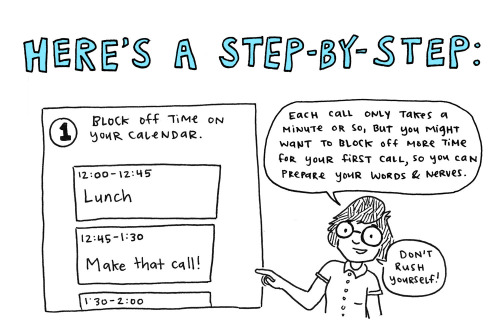This post contains story spoilers for Undertale.
I spent most of my playtime with Undertale scared and depressed. This is probably not a normal or even, perhaps, sensible reaction. The game is pretty hilarious. It’s full of fantastically written characters. It’s an overall enjoyable, fantastic experience that I’d recommend to anyone. But it really upset me, and that’s still hanging around whenever I think about it. And it’s all Toriel’s fault.
Well, maybe that’s a bit harsh. But it certainly feels that way.
Toriel is the kind of character I wish there was more of in fiction. I’ve been experimenting with a character like her (though quite, quite different) for awhile now in my own writing. She’s caring and incredibly genuine. She’s feminine, and given many “grandma” sort of qualities. But at the same time she’s strong, she’s powerful, and she makes things happen. She has agency. She calls back to this ideal person I dreamed of being when I was little: mom-like, but without the dependence that was connected in my head. Who I am has changed a lot since then, of course, but there’s still a real strong connection there. I could do a lot worse to look back at my life and realize I resemble Toriel. I loved her, from when she first takes your hand in the game. It was something so ridiculously intimate-feeling, a gesture you just don’t see in games like this. How could I not?
And not long after, the game forced me into a situation where I had to essentially hurt her. Now, yes, of course, there’s a pacifist solution, and I used it, but I really hurt her emotionally by leaving. I knew she’d be upset. But she gave me a phone, and her phone number, so she’d always know I was safe. So I called her, and she didn’t pick up. I called Toriel approximately every 10 minutes of game time for the entire game, and she never picked up.
Now, from a narrative standpoint, this makes perfect sense. To her, me leaving was another death, of many. Another mistake of her ex-husband she couldn’t stop. To Toriel, she was grieving for me. (Even more true once it’s revealed she was really grieving for the me of long ago, the character you control in the game not being you.) Why would she increase her pain by talking to me? I wasn’t going to make it, just like the rest. I was already gone. I understand why it’d be hard to pick up the phone.
But to me, personally, it was devastating. I’ve been working really hard on my brain problems recently, and I’ve discovered something about myself. I have an anxiety disorder, and it all comes from this fear that people I care about are going to leave me, or abandon me. That I can’t be the thing they want. Someday they’ll realize it, and off they’ll go. Toriel wanted me to stay with her, enjoy a simple life with her, and I tried. I tried so hard to do that. I wasted almost an hour trying to figure out a way to not tell Toriel I wanted to leave the RUINs. I liked her. I wanted to be that for her, if that’s what she wanted. I couldn’t. It was a game of adventure. So I had to press on, because that’s the game. And she left me for it.
The moment I called her after walking out of the RUINs, and she didn’t pick up, I nervously told myself it was too quick for another event with her, and she’d pick up soon. I played a tiny bit more, and nothing. And I realized she would never pick up. And I vowed to stop playing the game right then and there. I couldn’t take her leaving me. It reminded me of my recurring nightmare I have. I used to have it every night. These days, I’m doing better, and it’s a couple times a month. But I’m always somewhere I want to be, and I realize, at some point, someone I care about has disappeared because of something I did. Maybe it’s my parents, maybe it’s my fiance, maybe it’s someone else, but they’re gone. I run and search and cry and can never find them. I knew I wouldn’t find Toriel either, a character who said she’d love it if I called her “mom,” since I brought it up. I couldn’t take it. I had that nightmare that night, just to seal the deal.
I couldn’t stop thinking about the game, and Toriel, though. Everyone else was enjoying it. I was going to miss something important, wasn’t I? So I asked around, talking to people who had beaten it, trying to find a reason to play more. “Will Toriel pick up the phone? Will it be okay? Will she talk to me?” They told me it would be alright. But the whole way through the game, I called, over and over again. And she never picked up. I held on to the pie she had given me. I couldn’t bring myself to use it, because I knew it would probably say something in the use text that would upset me, because it’d be about her. I laughed at the jokes, I got to know other great characters, I enjoyed the game, sure, but most of it I was on edge. I was worried. I was scared. What if it didn’t work out? What if she doesn’t pick up the phone?
Of course, in the True Pacifist ending, you are reunited. Toriel comes back as part of the dramatic finale, and you can give her the family she wants. But what you can’t do is apologize for hurting her, making her worry. And what she doesn’t do is apologize for not answering the phone. You tell her you want to live with her, and she remarks that you should have said so from the beginning. But I couldn’t do that. I tried, but I couldn’t, just like so many things I wanted to be for my parents, because they wanted it so badly, but I couldn’t. And just like my parents, Toriel abandoned me, for a time.
I saw those ending scenes, and I went, “Oh, good, that’s what I wanted.” But even now I can’t completely get into the fantasy of it. I’m still worried about it. She left me once, for doing something I had to do. Can I really be sure she won’t leave again? She made a joke out of me wanting to call her “mom,” after all. Is this as serious as I want it to be? I don’t know. There’s no more game to tell me.
 A friend of mine commented (or maybe retweeted, I can’t remember) that it’s wonderful that Toriel has already basically become a mom for furries who don’t have that sort of thing. And that’s something I really understand, and that idea makes me happy. I kind of feel that way too, not because I don’t have a wonderful mother (mine’s pretty great, all things considered) but because can you ever really have too many moms? Too many people that show concern for you? And I’m glad she had an arc, of sorts, in the story, as a writer. It all worked well. I know she, in particular, is going to stick with me for a long time, and that’s the sign of a good character.
A friend of mine commented (or maybe retweeted, I can’t remember) that it’s wonderful that Toriel has already basically become a mom for furries who don’t have that sort of thing. And that’s something I really understand, and that idea makes me happy. I kind of feel that way too, not because I don’t have a wonderful mother (mine’s pretty great, all things considered) but because can you ever really have too many moms? Too many people that show concern for you? And I’m glad she had an arc, of sorts, in the story, as a writer. It all worked well. I know she, in particular, is going to stick with me for a long time, and that’s the sign of a good character.
But I’ll never get to tell her I missed her. And she’ll never get to tell me she’s sorry for leaving me alone for so long.
Maybe that’s silly or ridiculous to be so hung up on. But I am. Such is the power of an interactive medium.
This post originally appeared at On The Stick and is reprinted with permission. Alexis Long writes cool stories you should read at poetfox.com.
 $1 a month:
$1 a month:












































